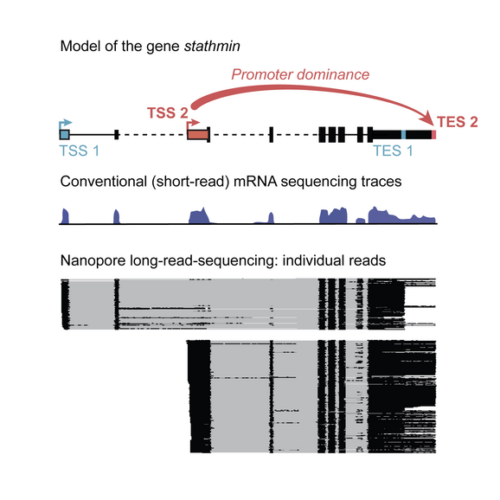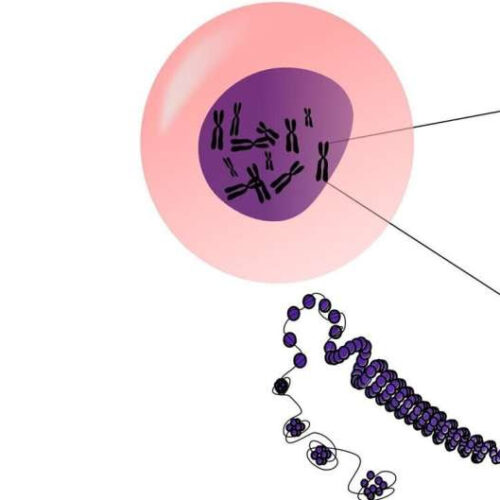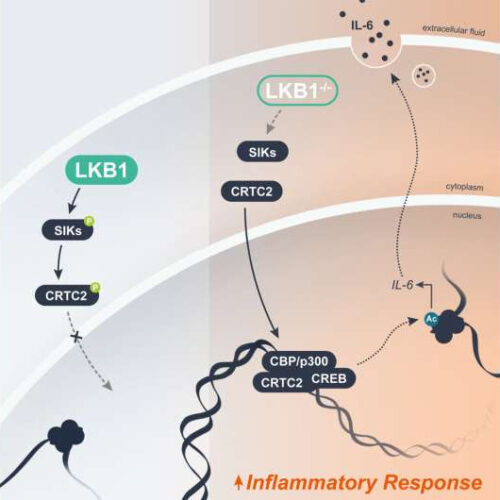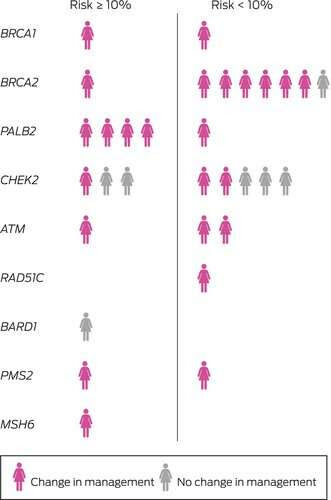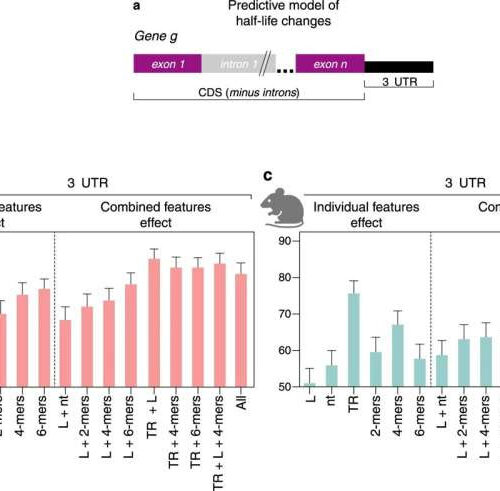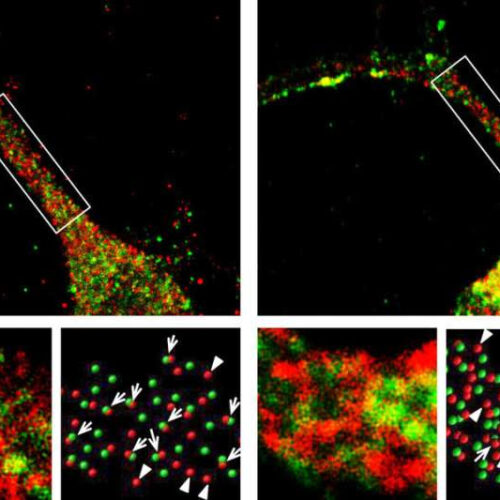MAX PLANCK INSTITUTE OF IMMUNOBIOLOGY AND EPIGENETICS IMAGE: EXAMPLE OF A GENE THAT CONTAINS TWO POSSIBLE START SITES (TSS), AND TWO POSSIBLE END SITES (TES). BLACK BOXES IN THE GENE MODEL SHOW SEQUENCES THAT WILL BE TRANSLATED INTO PROTEIN. WITH CONVENTIONAL SHORT-READ MRNA SEQUENCING, IN WHICH SIGNAL REPRESENTS THE ACCUMULATION OF READS, IT IS NOT...
Category: <span>Genetics</span>
Improving the study of sex-based differences in complex traits and disease
by Melissa Rohman, Northwestern University Credit: Pixabay/CC0 Public Domain Phenotypic sex differences are common in many aspects of health and disease. Despite the success of genome-wide association studies in improving the understanding of how genetic variation contributes to the manifestation of complex traits or diseases, there has been little use of this data to investigate sex...
Targeting uncontrolled inflammation may hold the key to treating therapy-resistant cancers
by Van Andel Research Institute Graphical Abstract. Credit: Molecular Cell (2023). DOI: 10.1016/j.molcel.2023.04.017 Van Andel Institute scientists have pinpointed how a specific gene mutation triggers an inflammatory cascade that may drive development of treatment-resistant cancers. The new findings, published today in Molecular Cell, reveal for the first time the molecular circuitry by which mutations in the gene STK11 cause inflammation to...
An unprecedented view of gene regulation
MIT engineers’ new technique analyzes the 3D organization of the genome at a resolution 100 times higher than before Peer-Reviewed Publication MASSACHUSETTS INSTITUTE OF TECHNOLOGY CAMBRIDGE, MA — Much of the human genome is made of regulatory regions that control which genes are expressed at a given time within a cell. Those regulatory elements can...
Study finds some motor neuron disease and dementia patients share genetic defects
by Macquarie University Gene breakthrough: Researchers have found some people with motor neuron disease and dementia carry the same genetic defects. Credit: Macquarie University New research has discovered that some patients with motor neuron disease (MND) and frontotemporal dementia (FTD) carry the same rare genetic defects that cause other neurodegenerative diseases. Researchers from the Macquarie University MND Research Center and...
Study shows benefit of universal genetic testing after breast cancer diagnosis
by Walter and Eliza Hall Institute of Medical Research Classification of 31 participants found to carry pathogenic gene variants, by gene, estimated risk of having a pathogenic gene variant,* and effect on treatment recommendations. Pathologic gene variants estimated with the CanRisk or Manchester algorithms. Credit: Medical Journal of Australia (2023). DOI: 10.5694/mja2.51906 According to Australian guidelines, women with...
Cellular ‘cruise control’ system safeguards RNA levels in Rett syndrome nerve cells
by The Hospital for Sick Children Cis-acting elements in the 3ʹUTR are highly associated with half-life changes. a Random forest classifier for prediction of mRNA sequence features relevant for half-life fold-change in human NEURTT and in cortical brain samples of the mouse Mecp2 y/-. Percent accuracy (Y-axis) of half-life fold-change predictions in human NEURTT (b) from 2 replicates or...
Wow: Geneticists Created an Organism Immune to All Viruses
BY JACKIE APPEL PUBLISHED: MAY 4, 2023 MR.Cole_Photographer Scientists have created a bacterium that is resistant to all viruses. Using strands of RNA, researchers re-coded the organism so that when viruses try to invade, their replication instructions get all mixed around. The team hopes their new tech will eventually be used to create virus-resistant bacteria to be...
Long telomeres, the endcaps on DNA, not the fountain of youth once thought, and scientists may now know why
by Johns Hopkins University School of Medicine In a study of 17 people from five families, Johns Hopkins Medicine researchers say they found that ultra-lengthy DNA endcaps called telomeres fail to provide the longevity presumed for such people. Instead, people with long telomeres tend to develop a range of benign and cancerous tumors, as well as the...
Scientists discover how mutations in a language gene produce speech deficits
by Anne Trafton, Massachusetts Institute of Technology A new study shows that when the gene Foxp2 is knocked out in mouse striatal neurons (top right panel), the protein dynactin (stained red) and the chain that binds dynactin and dynein (stained green) show abnormal spacing compared to wildtype neurons (top left panel). This suggests that the functions...

